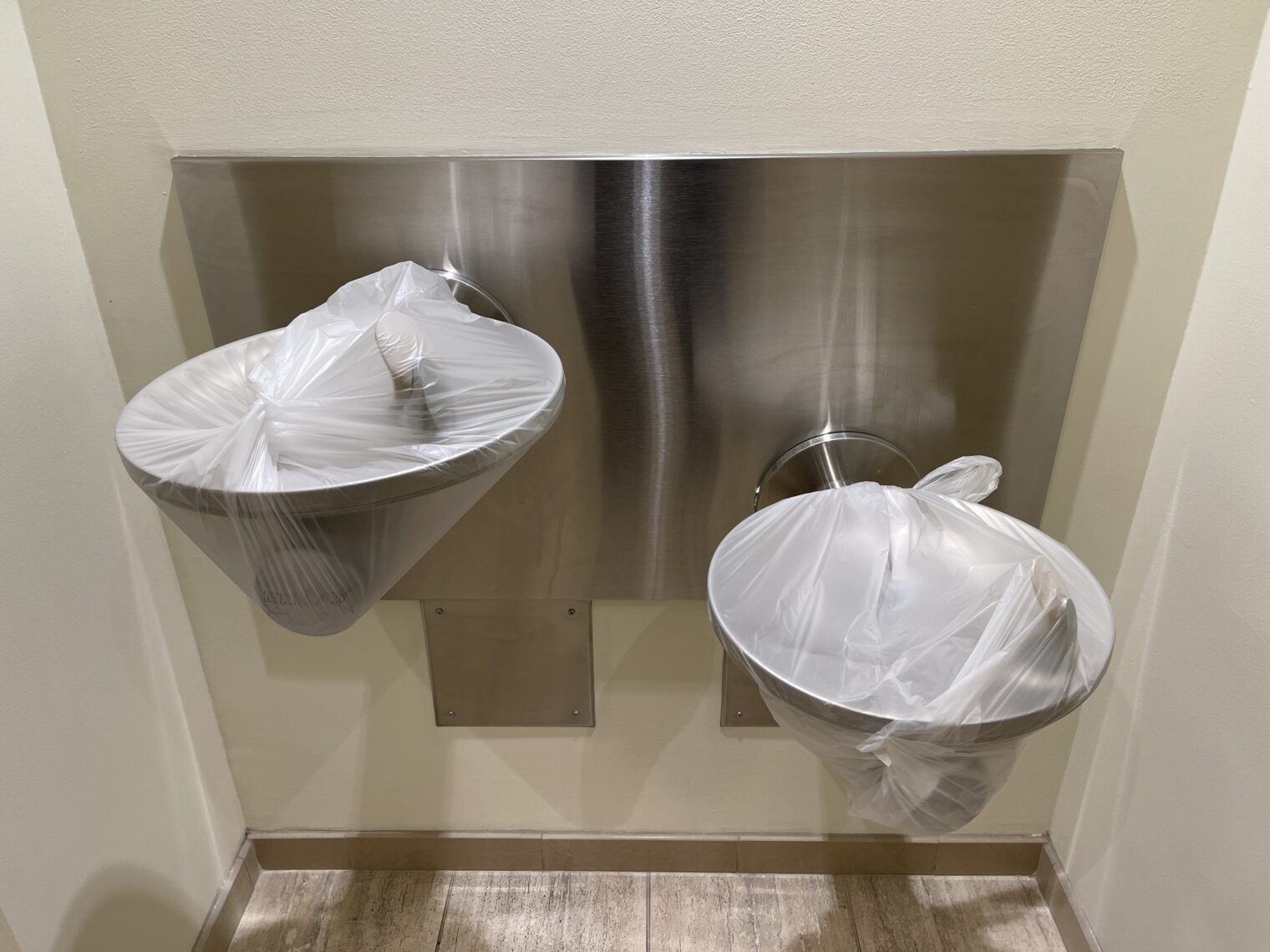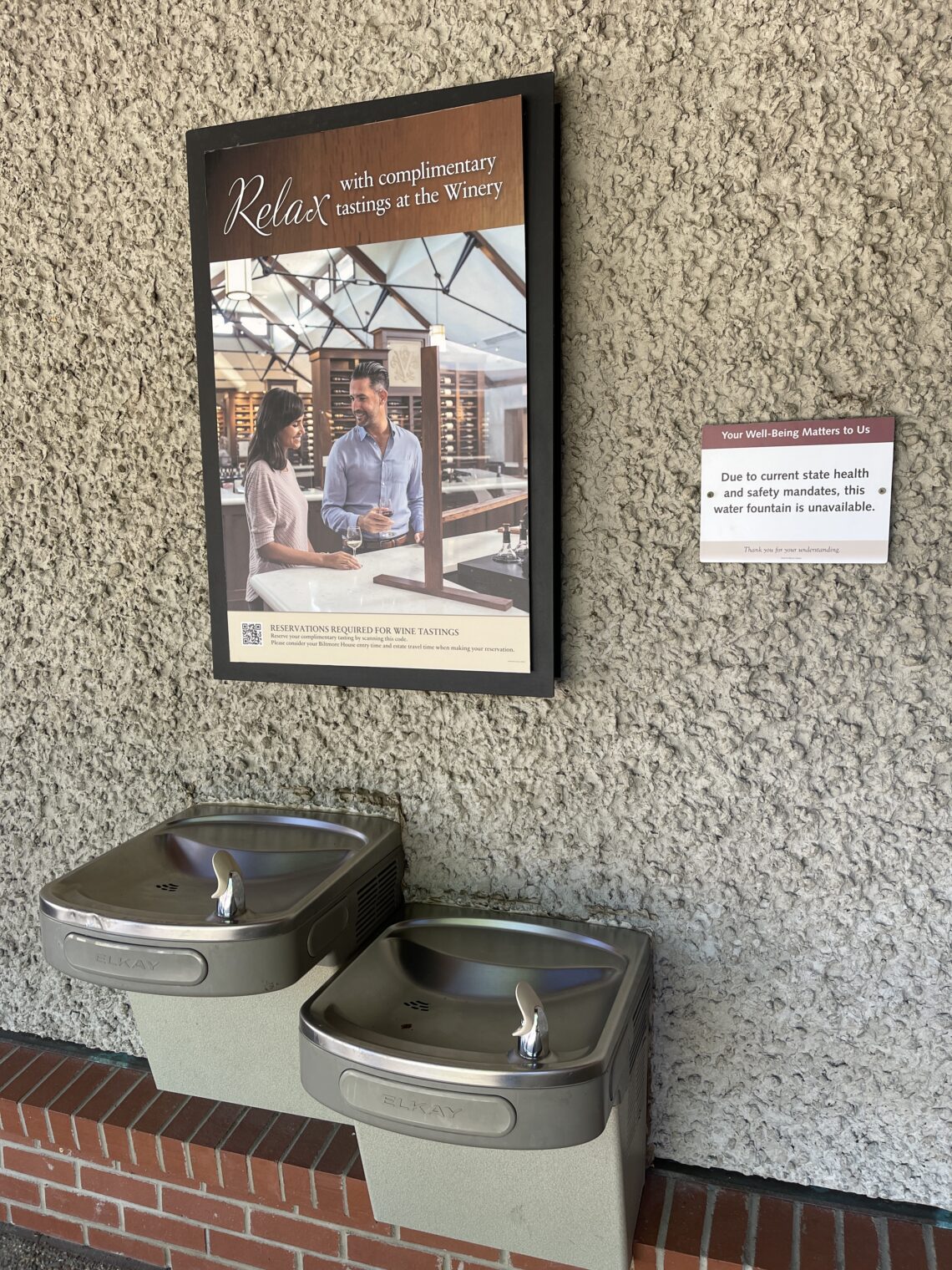One thing that I have noticed in the Shutdown States is that public drinking fountains are nearly always turned off or blocked off, e.g., in hotels, in government buildings, outdoors near playgrounds, etc. To the extent that this is explained, it is #BecauseScience and #StopTheSpread. But what is the science of COVID-19 spread via water fountains?
From June 5, 2020 (includes an actual “Rationale”!):
So the CDC said the risk was low as of June 2020. Has #Science changed? “CDC: Risk for catching coronavirus from surfaces is low” (April 12, 2021):
The risk for catching the new coronavirus from surfaces is low, the U.S. Centers for Disease Control and Prevention said this week in what some experts say is a long overdue announcement.
“People can be affected with the virus that causes COVID-19 through contact with contaminated surfaces and objects,” CDC Director Rochelle Walensky, M.D., said at a White House briefing on Monday. “However, evidence has demonstrated that the risk by this route of infection of transmission is actually low.”
“Finally,” Linsey Marr, Ph.D., an airborne virus expert at Virginia Tech, told The Times. “We’ve known this for a long time, and yet people are still focusing so much on surface cleaning.” Marr added that there is “really no evidence that anyone has ever gotten COVID-19 by touching a contaminated surface.”
If #Science v2020 and #Science v2021 both say that coronavirus is not spread via surface contamination, how does shutting down water fountains help Americans achieve superior health?
At Temple Karen (reform) in Washington, D.C.:
At the Biltmore Estate in North Carolina (“due to current state health and safety mandates”), April 26, 2021:



I wonder how many plastic water bottles have been discarded into mixed-waste streams (or just chucked on the street) because drinking fountains were shut down “in an abundance of caution?”
Data point: I was at a local hospital about a month ago, and for my scan procedure I had to drink a few bottles of water to help radioisotopes diffuse throughout my body. The bottled water was supplied ‘abbondanza’ but I noted there were two perfectly usable drinking fountains in the waiting area. I asked one of the nurses: “Could I just have used the water fountain?” and she said: “Oh, sure! I guess we didn’t think of that.” So they were open and functional in a hospital setting. After all, I still had to take my mask off to drink from the water bottle. And everything in the hospital was spotlessly clean, so I could have just used the fountain.
It’s especially perplexing because almost every modern drinking fountain is made from stainless steel components, which at the beginning of the Plague was being touted by gadget entrepreneurs (along with that miracle metal of 17th century America – brass) as the best way to get through the apocalypse without touching anything.
https://www.anypromo.com/wellness-safety/personal-protection/freedom-key-stainless-steel-no-touch-tool-p773405
https://www.etsy.com/listing/918301712/no-touch-tool-hand-stamped-fucking-covid
I wonder how many people who shut down the drinking fountains made money on the side selling no-touch tools?
Humor: Frank the Fixer (played by “Captain” Lou Albano of ancient WWF/Cyndi Lauper fame) tells Harry Valentini (Danny DeVito) and Moe Dickstein (Joe Piscopo): “Don’t Touch Nothin!” – Wise Guys, 1986, which was a funny (and very Jersey) “black” Mafia comedy directed by Brian DePalma. This scene was filmed about a mile and a half from the entrance to the Holland Tunnel into Manhattan. Jersey City (more precisely, Journal Square).
I never heard of Legionella, so a check of Wikipedia turned this up: “a pneumonia-type illness called Legionnaires’ disease and a mild flu-like illness called Pontiac fever”. In other words, things that can be used to pad “COVID-19 cases” once the water fountains with their bacterial growth are reopened to the public. Sounds like a bonus for the CDC.
I remember the 1976 eponymous outbreak of Legionnaire’s in Philadelphia. I wasn’t personally involved but a member of my family knew a man who attended that convention and luckily did not contract the disease or die from it. At the time it shocked the medical establishment to its core and had lots of other implications.
A very thorough journal article from 1988 (Clinical Microbiology Reviews):
https://www.ncbi.nlm.nih.gov/pmc/articles/PMC358030/pdf/cmr00055-0072.pdf
Calif* solved all its virus problems by running out of water.